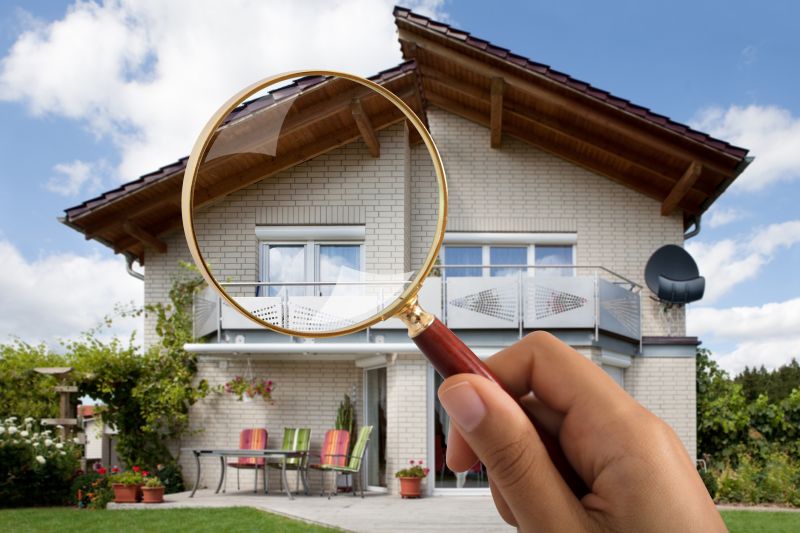Leading Products For Building Inspections Professionals
Discover essential tools and equipment trusted by experts to ensure thorough and accurate building assessments.
 Building inspections are a critical component of property assessment, encompassing a wide range of tools and equipment designed to evaluate structural integrity, safety, and compliance. Professionals in the field utilize various devices to identify issues such as structural weaknesses, electrical hazards, plumbing concerns, and moisture intrusion. The right selection of inspection products can enhance accuracy, efficiency, and safety during the assessment process. From handheld devices to advanced detection systems, the array of tools available caters to different inspection needs and property types.
Building inspections are a critical component of property assessment, encompassing a wide range of tools and equipment designed to evaluate structural integrity, safety, and compliance. Professionals in the field utilize various devices to identify issues such as structural weaknesses, electrical hazards, plumbing concerns, and moisture intrusion. The right selection of inspection products can enhance accuracy, efficiency, and safety during the assessment process. From handheld devices to advanced detection systems, the array of tools available caters to different inspection needs and property types.
Top Overall Option
Multifunctional Inspection Tool Kit
A versatile inspection toolkit combines multiple essential devices into a single package, offering thermal imaging, moisture detection, electrical testing, and visual inspection capabilities. This all-in-one solution provides inspectors with a comprehensive set of tools to evaluate various building aspects efficiently and accurately, making it suitable for diverse inspection scenarios.
Types of Products For Building Inspections
Thermal Imaging Cameras
Devices that visualize temperature differences to identify insulation gaps, moisture intrusion, or electrical hotspots.
Moisture Meters
Tools used to measure moisture levels in building materials, aiding in detecting leaks or water damage.
Electrical Testers
Instruments for checking wiring, outlets, and circuit safety to ensure electrical systems meet standards.
Borescopes
Flexible, camera-equipped tools for inspecting inaccessible or hidden areas inside walls or ducts.
Infrared Thermometers
Handheld devices that quickly measure surface temperatures for quick assessments.
Leak Detectors
Tools designed to locate plumbing leaks or gas leaks through various detection methods.
Structural Load Meters
Devices that assess the load-bearing capacity of structural elements.
Gas Detectors
Instruments that identify the presence of hazardous gases within a building.
Sound Level Meters
Tools to measure noise levels, useful for assessing electrical or mechanical equipment.
Dew Point Meters
Devices that determine the dew point to help prevent condensation issues.
Carbon Monoxide Detectors
Sensors that detect dangerous levels of carbon monoxide gas.
Radon Detectors
Instruments for measuring radon levels inside buildings.
Vibration Analyzers
Tools for assessing mechanical vibrations that could indicate structural problems.
Laser Distance Meters
High-precision tools for measuring distances and dimensions quickly.
Air Quality Monitors
Devices that evaluate indoor air quality, including particulates and volatile organic compounds.
Fire Safety Equipment
Inspection tools for testing fire alarms and sprinkler systems.
Popular Choices
Widely used for quick surface temperature checks across various building surfaces.
Commonly employed to detect dampness in walls and floors during inspections.
Popular for verifying electrical wiring and outlet safety.
Valuable for inspecting hidden areas such as inside walls or ducts.
Frequently used to visualize temperature variations and identify potential issues.
Important for detecting hazardous gas leaks in residential and commercial properties.
In demand for assessing radon levels in indoor environments.
Helpful for evaluating noise levels from mechanical systems.
Popular for assessing indoor air conditions and ensuring safety.
Commonly used to locate plumbing leaks efficiently.
Favored for quick and accurate measurements of building dimensions.
Essential for safety inspections related to indoor air quality.
Utilized for diagnosing mechanical issues in building systems.
Used to prevent condensation problems in building envelopes.
Popular for non-invasive thermal inspections.
Important for verifying fire safety systems are operational.
A comprehensive building inspection often involves visual assessments complemented by specialized instruments. Thermal imaging cameras allow inspectors to detect temperature variations and hidden moisture problems without invasive procedures. Moisture meters help identify dampness in walls and floors, which could indicate leaks or water intrusion. Electrical testers and circuit analyzers ensure wiring safety and compliance with standards. Additionally, tools like borescopes enable detailed visual inspections of hard-to-reach areas, providing insights into hidden structural issues.
Choosing the right products involves considering factors such as compatibility with existing equipment, ease of use, accuracy, durability, and safety features. Investing in high-quality, reliable tools can facilitate thorough inspections and help identify potential issues early, saving time and reducing costs associated with repairs or non-compliance. Whether for residential, commercial, or industrial properties, the right inspection tools are essential for delivering comprehensive evaluations and ensuring property safety and integrity.
Key Buying Considerations
- Compatibility with existing inspection tools and systems.
- Ease of use and ergonomic design for prolonged inspections.
- Measurement accuracy and calibration features.
- Durability and build quality for field conditions.
- Safety features and compliance with industry standards.
- Battery life and power options for extended use.
- Size and weight for portability and accessibility.
- Range and sensitivity of detection capabilities.
- Data storage and connectivity options for record-keeping.
- Availability of technical support and warranty services.
- Cost and value for the range of features offered.
- User reviews and reputation within the inspection community.
- Compatibility with software or apps for data analysis.
- Maintenance requirements and ease of calibration.
- Environmental resistance such as water or dust resistance.
This page contains affiliate links. We may earn a commission if you choose to purchase through these links, at no additional cost to you.
